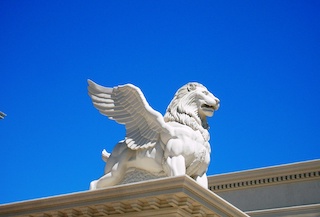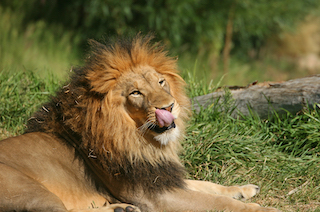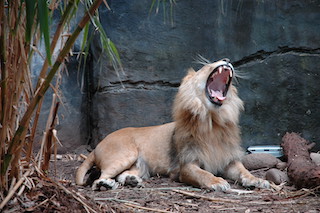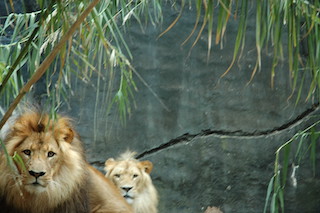Preying
Lions are both hunters. Zebras are their common prey. A lion’s meal starts with the entrails such as the heart, kidneys, and liver. But this feral cat’s cuisine tastes vary widely. Some lions will eat everything except the stomach. Others show a preference for the intestines. The female does most of the hunting. She does not share the kill evenly among the pride members. Lion has a social system based on division of labor and teamwork. The pride consists of up to 15 lions, with females, cubs and males. When resting, they enjoy lots of head rubbing, touching, purring and licking. Their parenting styles are not alike. Females give birth at the same time. Some mothers nurture their young and will permit other cubs other to suckle. However, a female may also leave her cubs, if food is scarce.
Hunting
A lone lion finds it hard to catch a prey because the prey they choose to kill is faster and nimbler than the lions. They can also outrun a single lion. So, to increase their success rate, they hunt using teamwork and smart tactics to bring it down. They form hunting parties to attack the fast animals found in the savannahs. The group sets the hunting methods very well in a scientific and ruthless manner. They work to attack the prey by forming two groups. Each lioness sets her unique role for the success of killing.
Eating habits
A lion’s meal starts with the entrails such as the heart, kidneys, and liver. But this feral cat’s cuisine tastes vary widely. Some lions will not eat the stomach. Others show a liking for the intestines. Some male lions prefer the flesh and will eat the back side, which is the fleshiest part, while the females eat the entrails. The last part they touch is the head. It is very rare for them to open the skull. It’s fast-working system allows them to gorge an average of 18kg in one sitting, and go for seconds shortly after.
Lion numbers
Ages ago, lions were the most seen large land mammals after humans. But today there are only 20,000 lions in the wild. Out of that roughly around 2,000 remain in Kenya. But the country is losing around 100 of them on a yearly basis. Over the coming 20 years, it will lose 50% of them. In the past 20 years, its numbers have dropped by 50%. But some put the decline rate higher.
Decline
Lion threats vary across range, but there are a few major reasons for the decline. Firstly, the lion’s prey are dropping due to habitat loss as well as the growth of farming to feed the growing human population. It puts the lions into conflict with humans. Farmers kill lions that have attacked their livestock. Also, a growing trade in lions has fuelled hunting and lion poaching. Their bones are used in Asia. Although many lions are well-secured, many others lack any shields and will decline, if not fade, over the coming years. To save lions, people are working towards highlighting the value that exists in saving them.
Sick
Lions are prone to tick-borne diseases. They contract them by eating sick dogs coming from the nearby villages. They also occur when they are exposed to disease during droughts. These ailments has caused mass drop in lions. But it is human conflict that is the cause of the dropping rate of lion numbers. Because of this, Kenya Wildlife Service, with locals, has put in place some measures. Hence, three groups – Born Free, Lion Guardians, and American Fish and Wildlife Service – have built lion-saving plans.
Lion mane
The thick mane round the lion’s neck and head is a unique trait and a defined feature of a male lion. Moreover, its length and darkness are caused by where it resides. Lions living in warmer places have lighter and shorter hairs than those in cooler regions. It can also change as it gets colder and hotter throughout the year. Nobody knows for certain why a male lion has a mane and not a female. Experts are still studying to understand why they have manes. So far, there are five thoughts as to why the males grow a mane. These are to protect the neck during fights, to keep cool and clean in hot climates, to blend in, to attract female lions and to warn other male lions.
1) Neck
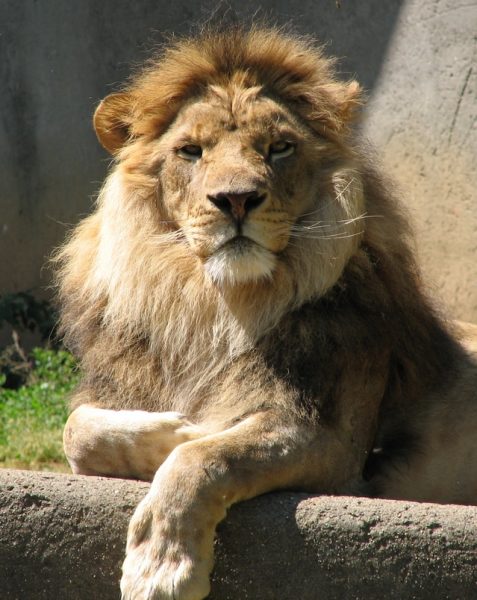
5 reasons why a lion has a mane
A century or two ago, Charles Darwin said that lion’s mane acts as a shield to protect the neck during fights against other males. Over time, however, it was seen that when lions fought, they rarely went for the neck but attacked from the rear. So, the mane is not there to protect its neck.
2) Keep cool
In the heat where lions gather, the bushy fringe does nothing to cool the body. They in fact attracts bugs. Moreover, darker manes take a toll by raising body heat. So, lion’s mane does not serve the purpose of a fan in warm climate.
3) Blend in
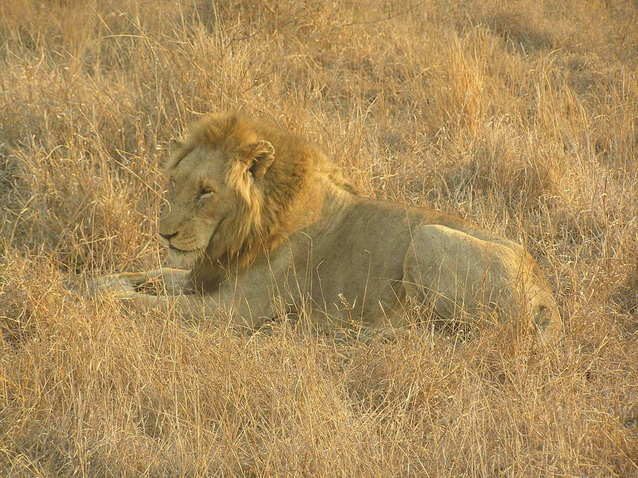
5 reasons why a lion has a mane
In fact, mane makes the lion stand out like a sore thumb against the grass. It does not even blend in well with nature where they live. So, that theory is out of the way.
4) Attraction
Lion with a mane means it has lived long enough to grow it. In other words, it has some sturdy genes. Over centuries, female lions believe that a huge ring of thick and lush mane equals a virile daddy and an able carer for its cubs. Thus, manes act as sexual feature. Now, here is a study to support that. The Serengeti lion project found out with dummy lions that females prefer male lions with darker manes. In other words, the darker and thicker, the better. So, mane signals health status to the females.
5) Warning
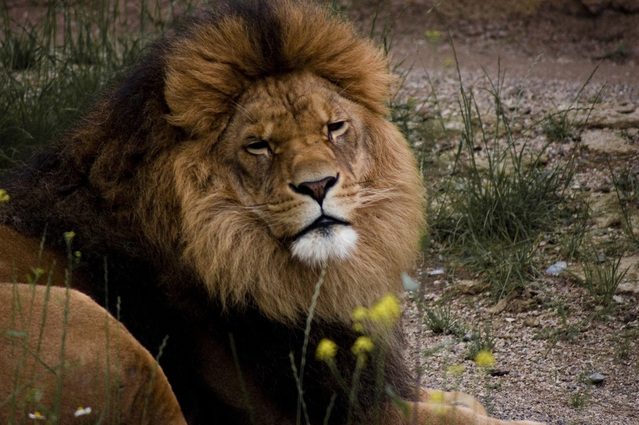
5 reasons why a lion has a mane
Lion’s mane is used not only to attract female lions but also to warn competing males. It’s length, size, darkness, color and quality define the lion’s fitness. A good brush of hair signals to other rival males about a lion’s skill and fighting ability. It sends a message that such a lion is too strong to risk fighting for the pride control thereby stopping fights. Reduced fights increase winning rate as well as mating chances leading to more cubs.
To receive a colourful digibook about lion with videos, images and text, please fill out the following form or simply email us on safaris@safari-center.com


